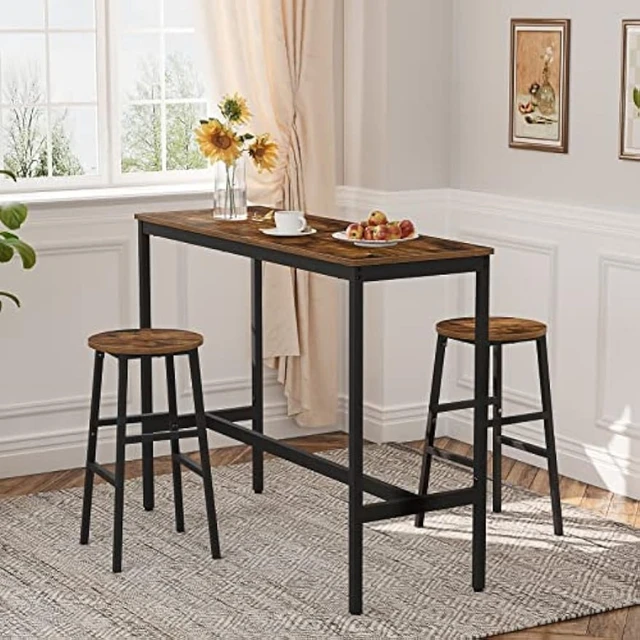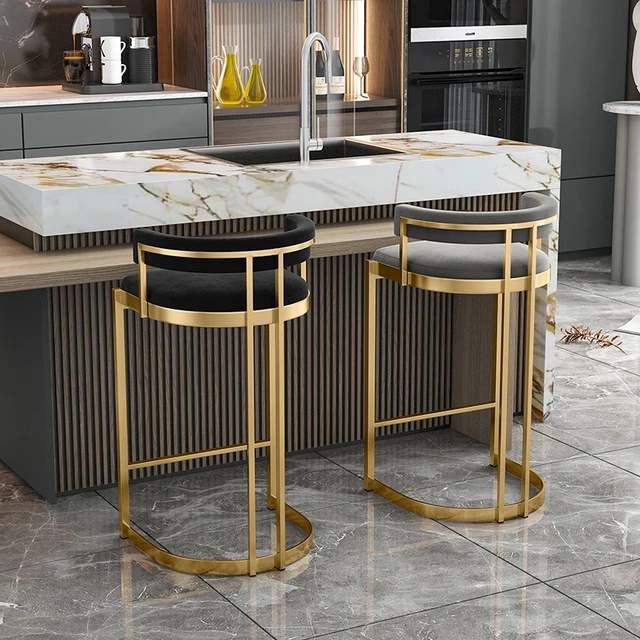 Introduction:
Introduction:
The height of kitchen countertops plays a crucial role in the overall functionality, comfort, and aesthetics of a kitchen. Finding the perfect balance between ergonomics and aesthetics ensures a pleasant cooking and dining experience. In this comprehensive article, we will explore the factors to consider when determining the ideal kitchen countertop height. From the principles of ergonomics and user comfort to the impact on kitchen design and accessibility, you will gain valuable insights to help you make informed decisions about countertop height in your kitchen.
Understanding Ergonomics in the Kitchen
Ergonomic Principles:
Ergonomics refers to the design and arrangement of items in a way that promotes efficiency, comfort, and safety for the user.
Applying ergonomic principles in the kitchen helps reduce excessive strain and fatigue during daily tasks.
Working Posture:
The ideal countertop height supports a neutral working posture, where the arms are comfortably bent at a 90-degree angle.
This posture minimizes stress on the back, shoulders, and wrists, reducing the risk of musculoskeletal discomfort.
Standard Kitchen Countertop Height
Average Height Range:
The standard height for kitchen countertops is typically 36 inches (91.44 cm) from the floor to the top surface.
This height accommodates a wide range of users and is considered suitable for most individuals.
Modifications for Specific Users:
Modifying countertop height may be necessary for individuals who are taller or shorter than average.
Customizing the height ensures optimal comfort and usability for those requiring specific accommodations.
Factors Influencing Countertop Height Selection
User Height and Preferences:
Consider the height and preferences of the primary users when determining countertop height.
Taller individuals may prefer higher countertops, while shorter individuals may opt for a lower height.
Multigenerational Considerations:
In houses accommodating different generations, it is important to strike a balance that ensures usability for all users, regardless of their height or physical abilities.
An adjustable countertop height system may be beneficial in such situations.
Task-specific Countertops:
Depending on the kitchen layout and tasks performed, different countertop heights may be appropriate in various areas.
Baking centers, for example, may benefit from lower countertops to facilitate rolling and kneading dough.
 Design and Aesthetic Considerations
Design and Aesthetic Considerations
Harmony with Base Cabinets and Appliances:
Achieving a cohesive design requires considering the countertop height in relation to the base cabinets and appliances.
Ensuring a visual balance creates a harmonious and aesthetically pleasing kitchen space.
Countertop Overhangs and Seating:
If incorporating a countertop overhang for seating or dining purposes, consider the overall height to allow for comfortable legroom.
Recommended overhang depth is typically around 12 inches (30.48 cm) for adequate space.
Accessibility and Universal Design
Universal Design Principles:
Universal design advocates for spaces that are accessible and user-friendly for people with varying abilities and mobility.
Adhering to universal design principles ensures that countertop height accommodates individuals with disabilities or limited mobility.
Wheelchair Accessibility:
Countertops should be at a height that allows individuals using wheelchairs to reach and use them comfortably.
A lower countertop height, around 32 inches (81.28 cm), may be appropriate for wheelchair accessibility.
 Here are some tips for matching your kitchen countertop with a kitchen island:
Here are some tips for matching your kitchen countertop with a kitchen island:
When selecting a kitchen countertop to match a kitchen island, there are several factors to consider to ensure a cohesive and visually appealing look. Here are some tips for matching your kitchen countertop with a kitchen island:
Material Coordination:
Choose a countertop material that complements the material of the kitchen island. For example, if your kitchen island features a natural wood finish, consider selecting a countertop material that complements the warmth and texture of wood, such as butcher block or a warm-toned granite or quartz.
Color Harmony:
Consider the color scheme of your kitchen and aim for a harmonious color palette between the countertop and the kitchen island. You can opt for a countertop color that either matches or contrasts with the island, depending on the desired aesthetic. For a cohesive look, choose colors that are within the same color family or share complementary undertones.
Contrast and Balance:
Create visual interest by using contrasting elements between the countertop and the kitchen island. For example, if your island has a dark or bold color, consider using a lighter or neutral-toned countertop to create a visual balance. Conversely, if the island has a lighter hue, a darker or patterned countertop can add depth and contrast.
Texture and Finish:
Consider the texture and finish of the countertop and how it coordinates with the kitchen island. If the island has a matte or textured surface, you may want to choose a countertop with a similar or complementary texture to create a cohesive look. Alternatively, you can also opt for contrasting textures to add visual interest and variety to the overall design.
Style and Design:
Take into account the overall style and design theme of your kitchen when selecting the countertop and matching it with the island. Whether your kitchen follows a traditional, modern, rustic, or eclectic style, choose materials, colors, and patterns that align with the desired aesthetic.
Ultimately, the goal is to create a harmonious and visually balanced kitchen by selecting a countertop that complements and enhances the appearance of the kitchen island. It’s recommended to consider samples, swatches, or consult with a design professional to visualize how the countertop and island will work together before making a final decision.
 Here are some tips for cleaning a kitchen countertop at the standard countertop height:
Here are some tips for cleaning a kitchen countertop at the standard countertop height:
Cleaning a kitchen countertop at a comfortable height can be made easier with the right techniques. Here are some tips for cleaning a kitchen countertop at the standard countertop height:
Clear the Surface: Before starting the cleaning process, remove any items, appliances, or utensils from the countertops to ensure clear access.
Gather Supplies: Gather the necessary cleaning supplies, such as a mild detergent or countertop cleaner, warm water, a soft cloth or sponge, and a microfiber towel or paper towels.
Wipe Down the Surface: Start by wiping down the countertop surface with a damp cloth or sponge to remove loose dirt, crumbs, or spills. For any stuck-on food or stains, apply a small amount of mild detergent or countertop cleaner and gently scrub the area using a circular motion.
Rinse: After scrubbing, rinse the cloth or sponge thoroughly and wipe down the countertop again to remove any residue from cleaning products. Ensure all soap or cleaning agents are completely rinsed off to prevent any buildup.
Dry the Surface: Using a clean, dry microfiber towel or paper towels, carefully dry the countertop surface to prevent water spots or streaks. Wipe in the direction of the countertop pattern or grain for a polished finish.
Address Stains or Spills: If there are any stubborn stains or spills that require extra attention, consult the manufacturer’s guidelines or use a suitable stain remover specified for your countertop material. Follow the instructions provided to safely remove the stain without damaging the surface.
Regular Maintenance: To keep the countertop clean and well-maintained, establish a regular cleaning routine. Wipe up spills and messes promptly to prevent stains or buildup. Avoid using abrasive materials or harsh chemicals that can damage the countertop surface.
Remember to follow the specific care and cleaning instructions provided by the manufacturer or installer of your countertop. Different countertop materials, such as granite, quartz, laminate, or stainless steel, may have unique care requirements. By implementing a regular cleaning routine and using appropriate products, you can keep your kitchen countertop at a comfortable height looking clean and pristine.
 Conclusion:
Conclusion:
Determining the ideal height for kitchen countertops involves finding the right balance between ergonomics, user preferences, and design considerations. By considering ergonomic principles, user height and preferences, as well as universal design principles, you can create a kitchen space that offers optimal comfort, usability, and visual appeal. Whether adhering to standard height guidelines or customizing for specific needs, finding the ideal countertop height contributes to an enjoyable cooking and dining experience. With the insights provided in this article, you can confidently make informed decisions regarding countertop height to create a functional and aesthetically pleasing kitchen environment.




